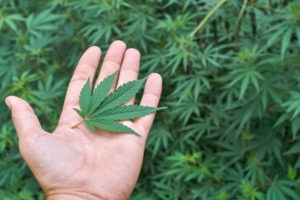 State of NY Hemp Updates
State of NY Hemp Updates
On September 15th, 2020, the USDA addressed over 100 NY state hemp farmers on a video call which lasted almost 1 ½ hours. The purpose of the call was to discuss the steps needed to move forward with a hemp growing license given that the NY state Department of Agriculture and Markets, the current administrator/regulator for NY state growers, has decided not to administer the program after October 31st, 2020.
The backdrop for this call was provoked by NY state deciding that the USDA rules for growing hemp were too stringent and unrealistic, and they would be impossible to implement and monitor.
While some of the USDA rules are cumbersome, such as requiring FBI background checks for the principals who own the hemp growing operations and represent another layer of bureaucracy, other rules such as those surrounding THC compliances will render hemp growing for CBD as unviable.
Currently, NY state hemp growers are operating under the authorizations given to the NY state Department of Agriculture and Markets under the 2014 Farm Bill. The Farm Bill of 2018 supersedes the 2014 farm bill, which gives ultimate authority to the USDA to approve the state’s plan to implement the rules as they (the USDA) interprets such.
Challenges with the 2018 Farm Bill
The main obstacle with the USDA’s interpretation of the 2018 farm bill is their categorization that all forms of THC, even the non-psychoactive THC-A, will be classified as THC since it is possible to convert THC-A to delta-9 THC.
In the three years that we have been growing hemp and have experimented with 20 varieties (or cultivars), everyone shows a delta-9 THC reading of approximately 0.1%, with the THC-A levels finishing up at 0.4 to 0.6%.
According to the USDA interpretation of the rules, these would be HOT and would need to be destroyed. Not only that, if the combined delta-9 THC+ THC-A totals come in at 0.5% or higher, but the farmer would also be considered negligent and could be prosecuted as if the farmer was growing marijuana illegally. (The USDA did say they were considering taking the threshold at which a farmer is considered negligent to 1% from 0.5%.)
If one reads the language in the farm bill of 2018 which was passed by Congress and signed into law in December 2018, the bill specifically states that in order for hemp to be compliant, the delta-9 THC levels need to be 0.3%, not the combined amount of delta-9 THC and THC-A.
The USDA’s interpretation of the THC compliance requirements is onerous and threatens to eliminate all small hemp growers from these endeavors. The only way to remain compliant with the new USDA rules would be to harvest the hemp plants before the CBD levels reach maturity, at approximately 9-10% CBD content in the immature flowers, well below the 14-18% we observed a couple of weeks later at maturity. This would drop the yield by about 30-40%, and accordingly the value of the crop. Only the largest farms with high degrees of mechanization would be able to survive financially in this environment.
The USDA could eliminate these concerns by adhering to a delta-9 THC compliance requirement, not a total THC compliance requirement. On the call with the USDA yesterday, I asked the question if they were considering going to a delta-9 compliance requirement and that idea was quickly dismissed as not up for consideration. Another ominous sign from the USDA was that they would not consider methods to remediate the THC levels prior to the creation of finished products. Let us break this down for you.
What we do at High Falls Hemp NY
When we harvest our hemp, we usually have been getting CBD readings of 14-18%, with delta-9 THC readings of 0.1% and THC-A levels of 0.5%. When we convert the hemp to a concentrated form, the CBD readings approach 80%, and the THC readings approach 2% (this includes the conversion of THC-A to delta-9 THC). The next step is a form of remediation: we dilute the CBD into finished products in which the THC levels are less than 0.3% (on a dry weight basis), and in compliance with all rules and regulations. This is one method in which we use, as hemp growers, to turn the CBD we obtain after extraction, into a federally compliant product. There are other methods in which THC can be remediated, including various extraction methods that remove the THC from the concentrated forms of CBD.
On the call with the USDA, they totally dismissed the idea that non-compliant hemp (due to higher readings of THC-A) can have the THC levels lowered via various methods. They said that the only path for non-compliant crops would be to destroy the crops.
Key Takeaways from the USDA Call
Here is the best part about this call: towards the end of the call, the USDA representative made an earnest and compassionate plea that they want us (the farmers) to succeed, yet they failed to recognize that the THC compliance rules would put the vast majority of farmers out of business. It was as if someone had told the USDA representatives that the THC compliance requirements were non-negotiable.
Keep in mind that marijuana in the states which allow the sale of marijuana for adult use have THC levels between 15 and 25%. The fact that THC compliance requirements are so low and THC levels of 0.5% could result in an arrest is beyond comprehension, when the levels of THC which can get people high are much higher than 0.3% or 0.5%.
High Falls Hemp NY is Ready
At High Falls Hemp NY, we are fortunate to have grown enough hemp to satisfy our needs well into 2022, even if we do not grow hemp in 2021. I believe it will take a large degree of compliance failures if the USDA rules about THC compliance remain in place, for the USDA to modify those rules. Or perhaps, the US Congress will pass a new amendment to the hemp provisions of the farm bill with greater specificity on what exactly THC compliance requirements should be, or just raise the compliance level to 1.0%. There have been some elected officials who have gone on record criticizing the new hemp rules which have been put forth by the USDA.
On the call, the USDA did say that they were re-opening up their comment period on their interim final rules through October 8, 2020, so we will be lodging our viewpoint there as well, although based on how the USDA officials responded on the call yesterday, I have limited expectations that anything will change.
More to come as the information is available. Subscribe to our newsletter in the sidebar to be in the know.
